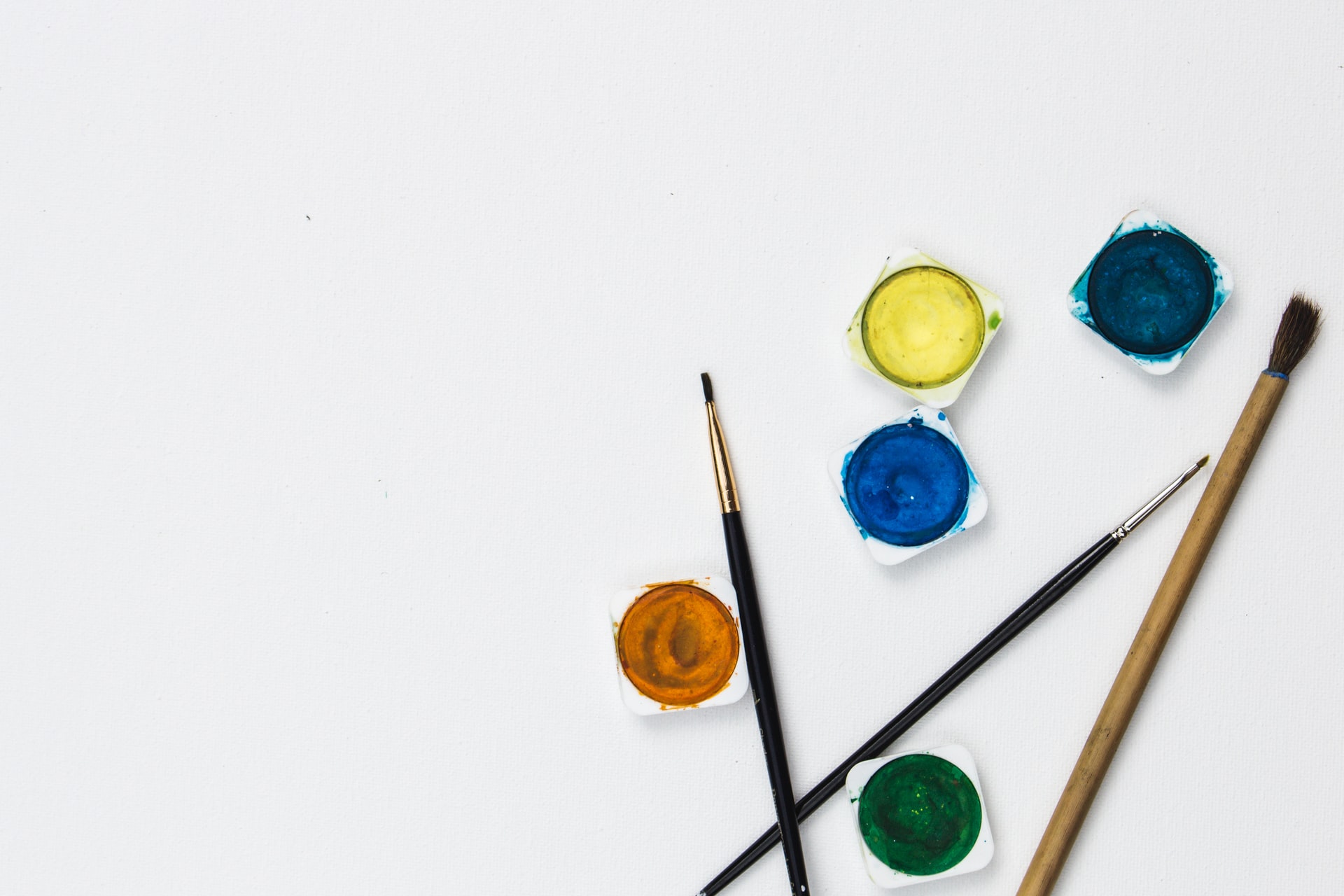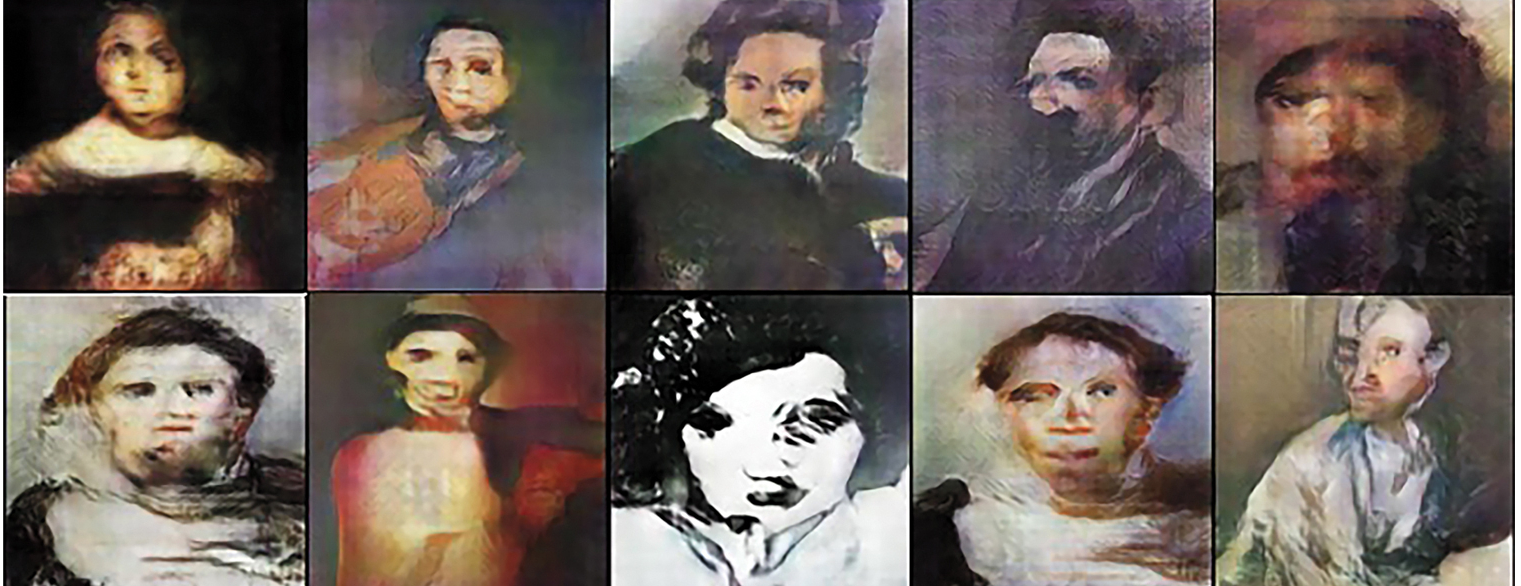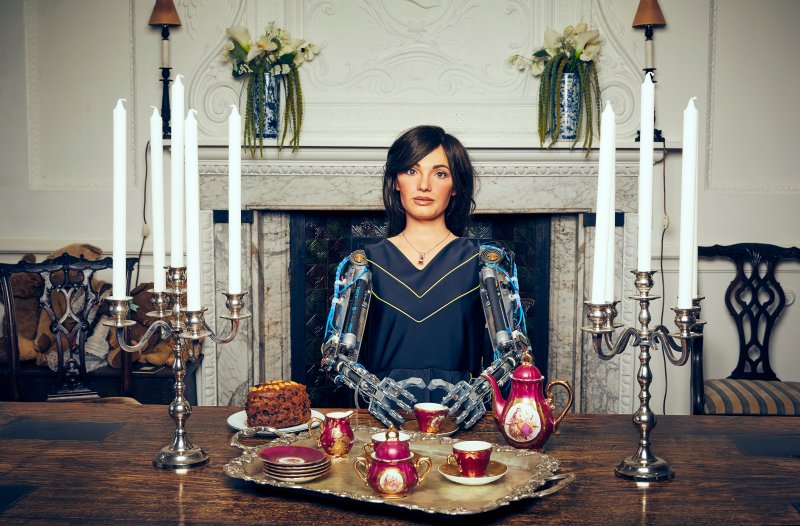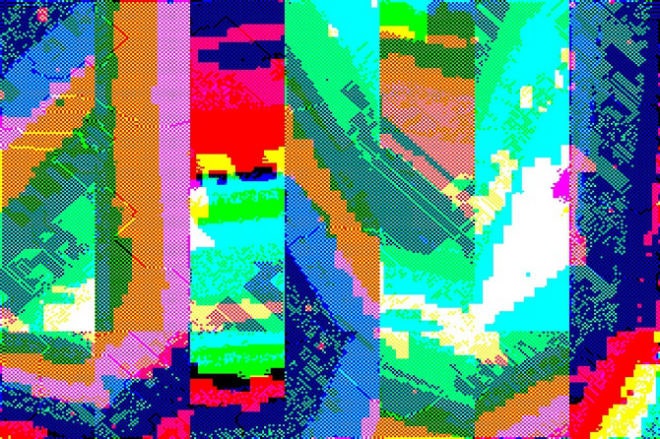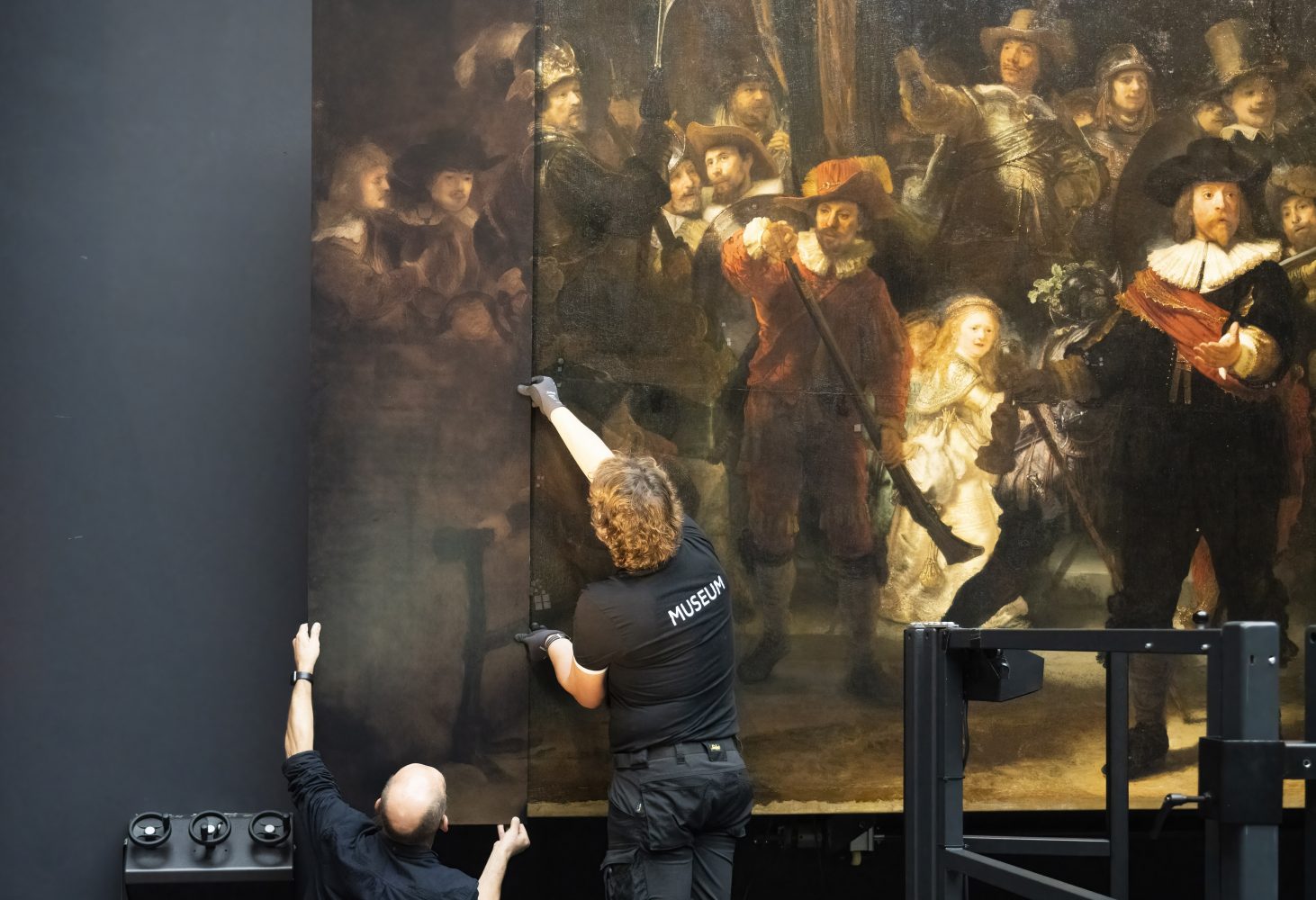How is the new technology used to create art?
AI and art creation
Christie’s art auction company recently sold its first AI-generated art piece for $432,500. The painting is a blurred face titled Portrait of Edmond Belamy. Generative adversarial networks (GANs) are typically used to produce this type of distorted and weird imagery. At first glance, such work might look odd, but some human artists created similar art on purpose. Think of Francis Bacon’s deformed portraits, such as Three Studies of a Portrait of Henrietta Moraes.
Artificial intelligence-generated art can also closely resemble human creations. One example is the AICAN tool, which was trained on 100,000 paintings of celebrated artists, such as Bruegel and Rembrandt. There are plenty of other creative AI-powered apps to help artists generate paintings.
To understand how individual artists deploy GANs to produce images and video, we can look at Amir Zhussupov’s work. This artist from Kazakhstan selects different datasets based on his interest to train a GAN. Amir relies on code, but there is still plenty of work left to do by hand. Here is what Amir told STIR, “For the (GAN) model I have been working on for the past month, I had to clean up, color correct, crop and align more than 17,000 paintings. So I have been practically living inside Photoshop, ha-ha!”
The piece below is Amir’s GAN-based work inspired by famous science fiction and horror artist HR Giger.
Another example of the art and AI powerful combo comes from Refik Anadol. The artist used 500,000 images, several thousands of audio recordings from the LA Philharmonic’s archive, and hundreds of videos to train a series of algorithms to combine all this data and deliver images that he later projected on the Walt Disney Concert Hall for ten days.
Here is one more example from ITRex. A renowned artist contacted us to build an AI-powered tool that would generate paintings based on the artist’s existing work together with paintings of other artists who inspired our client. ITRex team used neural networks to learn the artists’ trademarks and generate paintings accordingly.
Robots in art creation
Examples of robots in the art industry vary in their complexity, from mini robots that draw colorful lines following clear instructions to self-sufficient robot artists that can imitate humans in creating art.
Artists Julian Adenauer and Michael Haas created a robot that moves around on a canvas leaving a colorful trail. This art piece is installed on the wall of the Berlin Gallery. It is changing every day as the robot keeps moving around, adding color in response to Haas’s idea of creation, “the process of creation is ideally endless.”
Moving on to a more complex example of robotic technology in arts, Ai-Da, a robot artist, has human features and a robotic arm system. This AI-powered robot can analyze the images in front of her and command her arm movement to produce sketches. Ai-Da participated in the world’s first exhibition solely dedicated to an AI artist.
Sometimes, artists use robots to assist in art creation instead of relying on them to work autonomously. Artist Sougwen Chung designed and developed a robotic arm that helps her with painting. It connects to Chung’s brain-wave data, which influences the way the robot behaves. Chung believes this is a true human-machine partnership, and she is inspired to co-create together. In the pre-pandemic era, Chung performed with her robot in front of a live audience in a gallery setting. She was selling the resulting paintings for over $131,000 apiece. Now, she streams her collaborations live into exhibit spaces from her studio.
How AR and VR help artists
The gaming and entertainment industries were the first beneficiaries of extended reality. Soon, individual artists, museums, and galleries also turned to VR and AR development companies.
Among early applications of augmented reality in arts is the work of a Japanese artist, Nubumichi Asai. He gathered a team of technology experts and makeup artists to create an application that projects patterns on a moving face. This software can detect the human face and project strictly within its contours.
Another exciting virtual reality application in art is Google’s Tilt Brush, which allows artists to immerse into their own creation and view it from different angles. They can draw large objects floating in the air without paying attention to gravity.
Speaking of recent VR and AR applications in the arts domain, an extended reality art production company, Acute Art, collaborated with Olafur Eliasson to bring his artwork into art lovers’ personal space. Eliasson specializes in resembling natural phenomena and the outdoors in his pieces. Now, with the help of augmented reality, users can project northern lights, sun, rainbow, clouds, or any other natural manifestations into their living room.
Sensors and IoT in art creation
This technology enables artists to gather data from various locations and project it into their artwork.
One example comes from San Jose International Airport which hosts an eCLOUD. This artwork resembles a cloud whose polycarbonate tiles change from transparent to opaque state as it reads real-time weather data.
A Russian artist, Dmitry Morozov, offers another interesting example of using sensor technology in arts. Morozov created a Bluetooth-connected portable tool that captures pollution data and translates it into sketches. The device is based on sensors that measure dust and different gazes, such as carbon dioxide, carbon monoxide, and methane and translate this data into volts, which are algorithmically manifested in different shapes and colors on a canvas.
Technology changes the way art is displayed
Virtual museum tours
Due to the pandemic, many countries went on lockdown, and visiting museums physically became impossible. With modern technology in arts, you can see exhibitions while sitting on your sofa. Google Arts and Culture collaborated with over 2,500 galleries and museums worldwide to allow art lovers to immerse themselves in the art world online through virtual tours. Now one can view the history of American fashion in the time of 1740 to 1895 at the National Gallery of Art in Washington. Then move to Paris to enjoy the works of famous French artists at Musée d’Orsay. Then virtually travel to the Netherlands and witness incredible art pieces from the Dutch Golden Age, including the works from Rembrandt and Vermeer at the Rijksmuseum in Amsterdam.
Live streams
This technology is widely used in the retail sector. Now, live streams of exhibitions and concerts are also gaining popularity due to COVID. Towards the end of 2020, a famous English singer Dua Lipa streamed her concert live, and it was a vast success. According to the singer’s team, around 5 million viewers from different countries watched the event in real time. China alone brought in almost two million attendants.
Like concerts, exhibitions can also be streamed with the help of new art technologies. One example comes from Canada. Three Canadian galleries teamed up with a tech partner to organize a live stream featuring one famous painting, Wayne Gretzky #99. One gallery holds the original painting while the other two display replicas. This live stream captured the artwork and the viewers observing it. So, when visitors arrive at The Room, the gallery with the original painting, they are captured on a video together with the painting and streamed to the other two galleries. This way, the live stream did not only feature the painting, but also the people who were interacting with each other and goofing around.
IoT systems
In addition to creating art, IoT technology solutions can help museum staff protect paintings while improving visitor experience. Common IoT applications in the arts domain include:
-
Preserving artwork: paintings are sensitive to humidity and light. Prolonged exposure to moisture and direct sunlight will cause decay and discoloration, among other problems. Thanks to technology, museums can protect their art pieces by installing IoT sensors to measure temperature, light, and other relevant factors in real time. These sensors’ readings allow museum staff to adjust the relevant parameters to preserve the paintings and minimize restoration projects.
Another benefit of IoT technology in arts is protecting installations from water leakage. Museums can place sensors on water pipes near display areas to signal any leaks, enabling the staff to address the problem before it causes damage.
-
Supplying museum workers with helpful stats: IoT sensors can give museum staff an indication of which art pieces are the most popular among visitors. Sensors can track presence density around installations in real time to spot the artworks in demand. Another exciting application of sensors is measuring visitors’ heart rate and respiration to detect their emotional response to paintings and determine which ones elicit the most reaction.
-
Improving navigation: beacons positioned at strategic locations can communicate with the visitors’ smartphone sending notifications and eliciting action. For example, if a visitor downloaded the museum’s app, beacons could trigger the app to tell a story about a particular painting. Such sensors can also improve navigation by telling visitors where their favorite painting or art object is located.
Technology facilitates art trade
Online platforms

On top of that, their work might be placed outside the Arts category, making it difficult for customers to find.
Artists who have already gained recognition can sell their artwork on more professional and specialized mediums, such as Christie’s and Artnet art auctions.
A creative technology studio turned to ITRex to build an AR-based marketing app for fan engagement. This solution would allow artists to promote their work by decorating virtual rooms with their art pieces.
Fans would be able to visit their favorite artists’ rooms and share their experiences with friends. Fans could also buy selected items in a non-fungible token (NFT) marketplace.
Blockchain for art tokenization and crypto trading

All the 10,000 punks were quickly claimed. Now, users can place bids and sell characters following the instructions on the platform.
Here is a more innovative approach to selling art. A London-based startup, Maecenas, introduced the concept of tokenization to the arts industry in 2018. This technology allows artists to divide their artwork into fractions. Every fraction can be sold and owned separately. One buyer can purchase several fractions of one painting or even fractions of several paintings, creating a diverse portfolio.
In 2018, Maecenas marketed the 14 Small Electric Chairs painting by Andy Warhol. At that time, it was valued at $1.7 million, but the blockchain-based sale generated excessive attention, skyrocketing the painting’s value to $5.6 million.
Technology improves artwork security
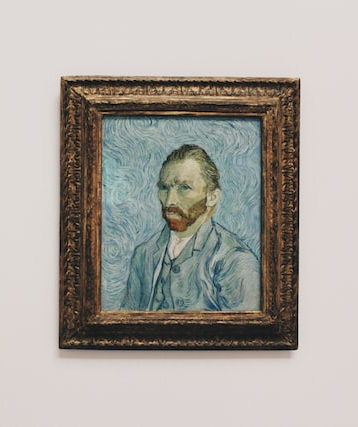
-
Detecting forgery: there is evidence of AI’s potential to see a forgery in paintings. Steven and Andrea Frank were able to train convolutional neural networks (CNN) on artwork belonging to an artist and then run the algorithm on a painting whose ownership is debatable to see if it matched that artist’s style. One of the main problems the couple faced was a lack of training material. They could overcome this by generating tiles (smaller fragments of a painting) from available artwork. Using this algorithm, the couple could correctly attribute paintings to Rembrandt, van Gogh, and other artists.
-
Access control: museums can place IoT sensors on doors and windows to give a signal, silent or loud, enabling security guards to react to intrusions. Also, sensors can be placed around valuable artwork, sending alerts if someone touches it.
-
Occupancy sensing: presence identification sensors can be positioned to detect movement when the museum is closed for visitors.
Technology and arts restoration and reconstruction
In 2019, Rijksmuseum dedicated millions of dollars to building and training of an AI tool that would reconstruct the missing parts in their original style. When asked why the museum went with AI instead of hiring an artist to complete the piece, Rob Erdmann, a senior scientist heading this project answered, “There’s nothing wrong with having an artist recreate [the missing pieces] by looking at the small copy, but then we’d see the hand of the artist there. Instead, we wanted to see if we could do this without the hand of an artist. That meant turning to artificial intelligence.”
In another fascinating example, AI could recreate a landscape hidden under one of Picasso’s paintings. When the artist was short on money, he tended to draw on top of his work. Conservators studying The Crouching Beggar noticed there was another image underneath. The Art Gallery of Ontario released an X-ray of this forgotten artwork enabling scientists to use AI and 3D printing to reconstruct the piece.
Art and technology relationship: what to expect in the future
Some people are still skeptical about the future of new technology and arts. A renowned art critic and Pulitzer Prize winner, Jerry Saltz, believes that AI-generated art is “boring and dull.” Despite some people’s pessimism, this article presents many applications of modern technology in the arts sector. It can support artists at different stages of their project’s lifecycle. And when it comes to AI, it doesn’t have the same creativity as humans (yet), but it has its unique usage. For example, after proper training, AI can imitate a style of a renowned painter from the past without adding its own touch, as humans would do.
There are issues that we need to address when resorting to technology in the arts. For example, in online streaming, paying the intellectual property royalties became a complicated matter. Some live stream concerts have allocated money to be paid when they understand how royalties work in this context. Standard licensing frameworks are also still missing. Another concern is who owns the copyrights of AI-generated art.
Despite these obstacles, technology widens our horizons whether we produce or simply enjoy arts, and all the examples mentioned in this article solidify the relationship between art and technology. If you have an idea of enhancing your studio, museum, or art research with technology, don’t hesitate to reach out.

